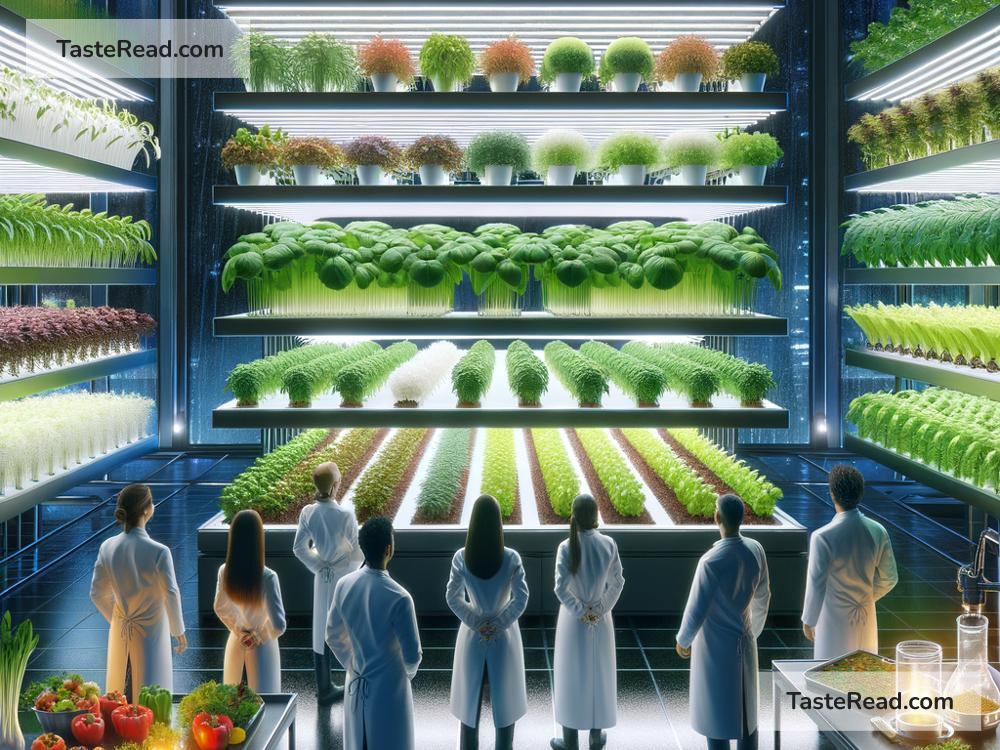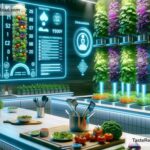The Future of Food and Resilience Planning: A Recipe for a Sustainable Tomorrow
Food is one of the most important parts of our lives. It keeps us healthy, brings us together, and connects us to the land, water, and air that sustain us. But as the world changes—with growing populations, climate shifts, and economic challenges—our food systems face major stress. How can we ensure everyone has enough nutritious food in the future? How can we build resilient food systems that can survive and thrive in the face of uncertainty? Let’s explore these questions.
The Challenges Facing Our Food Systems
Food challenges come from many angles. First, the world’s population is expected to exceed 9 billion by 2050. More people means more demand for food, including fruits, vegetables, grains, and protein. At the same time, climate change is altering temperatures, rainfall patterns, and growing seasons, making it harder to grow food in traditional ways. Extreme weather events like floods, droughts, and heatwaves further threaten crops and livestock.
Additionally, farming practices today heavily rely on natural resources like water, soil, and energy. Unfortunately, these resources are finite—not unlimited. For example, fertile soil can degrade if used carelessly, and water supplies can run dry if overused. Fisheries, too, are under strain from overfishing and warming oceans. On top of this, food transportation and storage are vulnerable to disruptions and waste.
Economic inequality adds another layer to this issue. Even though the world produces enough food for everyone, many people cannot afford—or access—it. Millions face hunger, while others waste food in abundance. The COVID-19 pandemic further taught us that global food systems can quickly become unstable in times of crisis.
But there’s also good news: humanity is creative and resilient. We can address these challenges by rethinking how food is produced, distributed, and consumed.
The Future of Food: Innovative Solutions
The future of food will look different from today, shaped by technology, sustainable practices, and new cultural habits. Here are some exciting ideas and trends shaping the future of food:
-
Urban Farming and Vertical Agriculture
Traditional farming happens in rural areas, but urban farming brings food closer to the cities where most people live. Imagine skyscrapers full of plants, using advanced systems like hydroponics (where crops grow in water instead of soil) or aeroponics (where crops grow in nutrient-filled mist). Vertical farms need less land and water and can grow fresh food year-round. -
Alternative Proteins
Meat production uses significant resources, from water to feed for animals. To reduce this impact, scientists are creating alternative proteins, like plant-based meat, insect protein, and lab-grown meat. These options take less energy to produce and offer protein-packed alternatives without harming the planet. -
Climate-Resilient Crops
Scientists are working to develop crops that can survive extreme weather. For example, drought-resistant corn or salt-tolerant wheat could help farmers grow food in challenging environments. Seed banks, which store seeds of many plant varieties, also protect genetic diversity to ensure we’ve got options in the future. -
Reducing Food Waste
Globally, nearly one-third of food produced is wasted. That’s bad for both people and the environment. Innovations like better refrigeration, packaging, and composting can save perfectly good food from ending up in the trash. Apps connecting local communities to share surplus meals can also help. -
Precision Agriculture
Using tools like drones, sensors, and satellite images, farmers can better monitor crops and soils. Precision agriculture helps optimize watering, fertilizing, and planting, ensuring higher yields while protecting resources. -
Local and Decentralized Food Systems
Depending on international supply chains for food is risky. More communities are focusing on growing or sourcing food locally, which reduces transportation costs and strengthens local economies. Community-supported agriculture (CSA) programs are one way people can share in locally grown food.
Building Resilience: Preparing for Uncertain Times
Resilience planning means preparing food systems to adapt and recover during shocks—like pandemics, climate disasters, or economic crises. This requires careful thinking and collaboration across governments, businesses, farmers, researchers, and communities. Here are some key strategies for resilience planning:
-
Diversification: Growing a wide variety of crops and livestock makes the system less vulnerable to single threats like pests or disease. Imagine a farmer losing their crop to drought but still having livestock or other crops to rely on.
-
Strengthening Supply Chains: From production to storage to distribution, every step in the food chain must be reliable. Ensuring tight coordination, backup systems, and partnerships can prevent disruptions.
-
Education and Empowerment: Resilient food systems require people with knowledge and tools to adapt quickly. Farmers can learn sustainable practices, and citizens can learn how to grow food or prepare meals that reduce waste.
-
Global Collaboration: Food security is a shared challenge across nations. By sharing information, technologies, and resources, countries can face food challenges together.
The Role of Individuals
You might wonder: “What can I do?” The future of food isn’t just about big systems; it’s also shaped by everyday choices. Supporting local farmers, reducing personal food waste, eating sustainably (such as choosing plant-based meals), and learning about where your food comes from can make a difference. Small actions add up when practiced by millions.
Conclusion
The future of food is an exciting, evolving story—and resilience planning is its foundation. Though challenges like population growth and climate change seem daunting, human creativity offers hope. By embracing new technologies, sustainable agriculture, and local collaboration, we can build food systems that nurture both people and the planet. Together, we can cook up a future where everyone gets a seat at the table.


